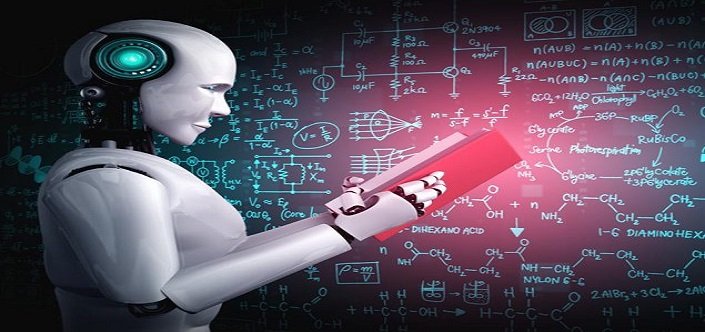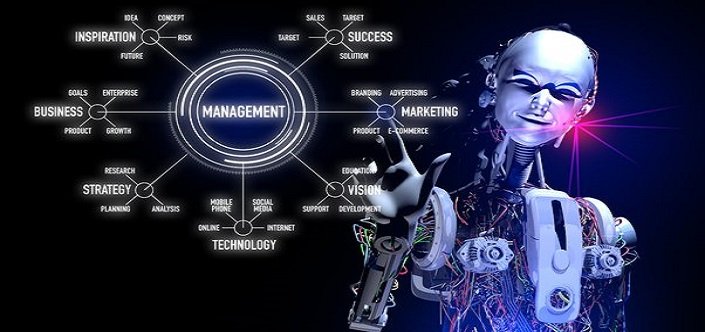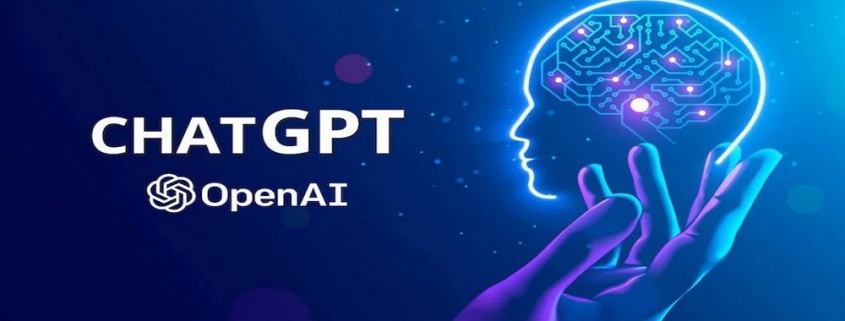Exploring the Power of ChatGPT and the Future of Language AI Technology
ChatGPT is a language model developed by OpenAI, co-founded by Sam Altman in 2015, and supported by well-known investors such as Microsoft., based on the GPT (Generative Pre-trained Transformer) architecture and was officially released on November 30, 2022. It is designed to understand users’ natural language input and generate responses that resemble a human conversation. It has been pre-trained on a massive dataset of text from the internet, allowing it to generate coherent and contextually relevant responses to various prompts and perform a diverse range of tasks such as language translation, providing answers to questions, and generating conversations.
Recently, Microsoft claimed to have connected hundreds of Nvidia GPUs on its Azure cloud computing platform to create the supercomputer that supports OpenAI’s initiatives. As a result, tools like ChatGPT and Bing’s AI capabilities were unlocked by OpenAI, enabling it to train ever-more potent models helping to advance the ChatGPT technology. Further, to power ChatGPT and to fuel AI initiatives for OpenAI and its internal teams, the software giant Microsoft is constructing its own ML hardware by creating an AI chip. According to The Information, Microsoft has been covertly developing its artificial intelligence chips since 2019 to combat the escalating expenses of research for internal and OpenAI initiatives by lowering its dependency on Nvidia’s GPUs which could help reduce production and technology costs to ChatGPT and other similar technology companies.
Key developments in ChatGPT technology:
-
In April 2023, OpenAI Company initiated a bug bounty program to reward amounts ranging from $200 for low-severity findings to $20,000 for major bug discoveries to consumers who report such security flaws in its AI services, including ChatGPT on the crowdsourced cybersecurity platform Bugcrowd.
-
On April 17, 2023, Microsoft Corporation stated its intention to employ PowerToys, an open-source program, to incorporate ChatGPT into Windows 10 and 11 to enable users to communicate by asking questions and receiving answers. This declaration follows the recent unveiling of the Windows 11 taskbar search bar, powered by Bing AI and a newer version of OpenAI’s ChatGPT, which provides an enhanced chat experience to users using AI technology.
-
On March 13, 2023, OpenAI Company released an enhanced version of ChatGPT by integrating the GPT-4 language model system, and users can utilize the Chat GPT-4 tool to the maximum extent by opting for a paid subscription. The internal testing of GPT-4 conducted by the company, with an emphasis on content moderation, support, programming, and sales, revealed that ChatGPT 4 is 40% more probable to generate precise responses than GPT-3.5 and is 82% more reluctant to respond to queries for prohibited content.
Similar Technologies:

The rapid popularity and high demand for ChatGPT have encouraged the development of similar AI-powered technological innovations by leading companies. These companies have all created their varied versions of the GPT-3 model, with different levels of success and applicability. Some of the most are:
- Google – BARD
Bard is the AI-based conversational chatbot generated by Google LLC and was officially released on March 21, 2023. This application was initially set to launch in February; however, as a result of an inaccurate response by Bard, which created a financial loss of US$100 billion for Google, the company decided to re-evaluate its AI chatbot and make necessary modifications before its official launch.
- Quora – Poe
Quora created Poe, an AI chatbot platform, and has been in operation since December 2022. It enables users to pose queries to a variety of AI bots built on top of expansive language models, including those created by OpenAI and other businesses like Anthropic.
- Writesonic – ChatSonic
A leading AI text generator, Writesonic, unveiled ChatSonic, a cutting-edge conversational AI chatbot that outperforms ChatGPT in January 2023. This chatbot uses searches, photos, and data available till the present time to create content.
- Amazon – Bedrock
The most recent machine learning platform from Amazon Web Services called Amazon Bedrock, gives users a simple approach to creating and deploying generative AI applications using foundation models without the need to manage any physical infrastructure or the high operational costs that are typically associated with it. This application, launched by AWS in April 2023, generates images, summarizes texts, serves as an AI chatbot, and can be used as a search engine.
- Character AI
This is an online application that can engage in natural conversation based on context. The beta model was created by Noam Shazeer and Daniel De Freitas, former LaMDA developers for Google, and was released to the public in September 2022. It is a chatbot program where a user can pick the personality they wish to communicate with from an array of options, and the conversational style of the AI will alter depending on the character they select.
- Meta – BlenderBot
A new AI chatbot named BlenderBot 3 was developed by the parent company of Fcaebopok, Meta, which can engage in online conversations with users and respond by conducting web searches.
- Jasper AI – Jasper Chat
On December 20, 2022, the Y Combinator firm, Jasper AI, a software development company based in the US, debuted its new Jasper Chat feature, following the momentum that OpenAI generated with ChatGPT.
However, in an open letter published in March 2023, several leading businessmen and AI researchers, including Elon Musk and Apple co-founder Steve Wozniak suggested all AI labs immediately stop training any AI systems more potent than GPT-4 for at least six months due to the rising concerns over its truthfulness and accuracy. Contrasting this, Elon Musk himself announced in April 2023 that his newly incorporated AI company, X.AI, will be working towards developing its version of ChatGPT technology, which will be named TruthGPT, as an enhanced and more reliable version of ChatGPT.
Applications of ChatGPT and related technology:

The development in AI fields in the generative fields of text, content, and images is being fueled by the advancement in ChatGPT and other related technology. Apart from this, some other sectors that benefit the most from these technologies or can apply these technologies include:
- Education sector:
The education sector can adopt ChatGPT and other similar technology by creating a syllabus framework, proofreading and providing reviews on children’s assignments, offering tips for creating personalized teaching, and creating teaching content for students. A test conducted by the Minnesota University Law School has the potential to clear the US law exam. Therefore, the academic abilities of ChatGPT can be used by the education sector. However, the plagiarism risks are creating hesitations for the usage of ChatGPT in this sector. However, the recent innovation by anti-plagiarism software such as Turnitin, which can detect AI-generated text, could encourage its adoption across different educational establishments.
- Real estate industry:
The real estate sector is one profession that has already embraced ChatGPT technology. There are a limited number of criteria that can be used to characterize a property when it is up for sale, including quantitative information such as square footage, total acreage, number of bedrooms and bathrooms, price, and as well as factual and descriptive terms such as renovated, open concept, formal dining room, and others to be included in the essentials. However, ChatGPT can assist in creating such descriptions in a very small amount of time. It has reportedly altered the way some residential and commercial agents work, from creating listings and social media posts to creating legal paperwork. Additionally, it might be used to automate repetitive processes like making difficult calculations and responding to commonly asked inquiries.
- Gaming development:
The gaming industry is another sector that can extensively use ChatGPT-based technologies by coding games. A user accomplished the task of recreating a famous game called Pong in a very short time frame that can be measured in seconds. In other words, creating Pong was previously also doable with older versions of GPT 4; however, with the advancement in ChatGPT technology, it does so for the first time rapidly and all at once.
- Market research and data analysis
The market research and data analysis processes can be improved by using ChatGPT technology. To gather customer feedback and insights, ChatGPT can be used to create conversational and intelligent surveys. When compared to conventional surveys, using ChatGPT permits for more organic and interesting data collection. In addition, the analysis and comprehension of customer demands and preferences can be improved by using ChatGPT to group customer comments and other unstructured data into categories based on certain topics, such as product features, customer service, and marketing initiatives. Sentiment analysis, predictive modeling, and social media analysis are some other potential applications of ChatGPT in data analysis activities.
- Entertainment and media industry
The generative ability of ChatGPT and other similar technologies expands its application scope to various fields of entertainment and media sector, including music and content creation. As for content creation, Jasper AI has already utilized the technology present in its Jasper Chat to write and generate books that have been published. In addition, a test conducted by Musictech company revealed that ChatGPT could be used to compose music, write songs, and analyze music.
- Coding purposes:
ChatGPT can generate algorithms and write codes that could assist a large number of start-ups with low investment funding. Consider the example of AutoGPT, which is an open-source application that runs on Python language. It is an experimental program that demonstrates the GPT-4 language model’s potential to integrate LLM models to accomplish any specified objective. Auto-GPT tests the limits of what AI is capable of as one of the first instances of GPT-4 operating completely autonomously.
Limitations:

Certain technical restraints and public challenges are discouraging the growth of ChatGPT and similar technology. Some of them include:
- Negative public sentiment:
Ever since its release, ChatGPT has been stirring public sentiment in both directions. The uncertainty about AI technology among users is resulting in negative public sentiment about ChatGPT technology. A survey conducted by Pew Research Center in 2021 about the public feelings towards the growing usage of artificial intelligence in daily life showed that only 18% of respondents indicated they were more excited than concerned, while 37% said they were more concerned than delighted, and 45% said they were both equally concerned and excited. According to a Monmouth University survey, 55% of Americans, as opposed to 44% in 2015, believe that AI could endanger the existence of the human species. The concerns of misinformation, unemployment, and bias are some of the reasons restricting the usage of ChatGPT among a particular set of users.
- Unfavorable government regulations
The privacy concerns and ethical issues associated with ChatGPT-based technology are causing its ban in some countries. ChatGPT has been effectively banned by Italy’s national privacy regulator after OpenAI was charged with the unlawful collection of personal data in March 2023. In addition, the country’s data protection authority stated that the company lacked a legitimate reason to acquire consumers’ data. It also declared that OpenAI also lacks a system to prevent minors from using the program. Moreover, in April 2023, the legislators in the European Union sought to provide authorities new powers to control the development of technology like those underlying ChatGPT as EU politicians argue that the rapid advancement of AI in recent months necessitates a new set of regulations adapted to potent, all-purpose AI technologies.
- Limited capacity
The limited capacity of ChatGPT and other similar technologies is a major limitation that companies must try to overcome by conducting extra research work as it creates disrupted usage for users. ChatGPT reaches full capacity frequently, which restricts its usage to a limited number of users.
In conclusion, ChatGPT and other similar technologies offer a wide range of application possibilities across different sectors and can bring about major changes in different industries. However, since it is still in its initial stages of development, companies generating these technological applications must conduct rigorous research to fortify their work and enhance their accuracy levels by eliminating the various ethical concerns associated with them.



